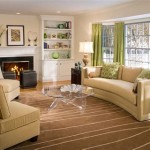How To Decorate A Small Bedroom To Make It Look Bigger
Small bedrooms present unique decorating challenges. Maximizing space and creating an illusion of greater size requires strategic planning and a focus on visual techniques. While the physical dimensions of the room remain constant, careful attention to color, furniture selection, storage solutions, and lighting can significantly impact the perceived size and overall ambiance. This article will explore several techniques to effectively decorate a small bedroom, making it feel more open, airy, and inviting.
Optimizing Color Schemes and Lighting
Color and light are fundamental elements in interior design, and their strategic application is particularly important in small spaces. Dark colors absorb light, making a room feel smaller and more enclosed. Conversely, light and neutral colors reflect light, creating a brighter and more spacious feel. Whites, creams, pale grays, and soft pastels are excellent choices for walls, ceilings, and large pieces of furniture. These hues maximize the natural light available in the room, expanding the perceived boundaries.
Beyond the primary wall color, consider the effect of contrasting trim. A slightly lighter shade of white on the trim can add subtle dimension without overwhelming the space. Avoid bold, dark trim colors, as they can visually chop up the room and detract from the sense of openness. If a stronger color is desired, use it sparingly as an accent, such as in throw pillows, artwork, or a small rug.
Natural light is a crucial asset in any room, but especially in a small bedroom. Keep windows unobstructed by heavy drapes or blinds. Opt for sheer curtains or light-filtering shades that allow maximum light penetration while still providing privacy. Mirrors strategically placed near windows will further amplify natural light, bouncing it around the room and creating a brighter, more expansive atmosphere.
Artificial lighting plays a vital role, particularly during the evening hours. Avoid relying solely on a single overhead light, as this can create harsh shadows and make the room feel smaller. Instead, incorporate multiple sources of light at different levels. Table lamps on bedside tables provide task lighting for reading, while wall sconces can free up valuable surface space. Consider using recessed lighting or track lighting to distribute light evenly throughout the room without taking up floor space.
The color temperature of light bulbs also influences the perceived size of a room. Warm-toned bulbs (around 2700-3000 Kelvin) create a cozy and inviting atmosphere, but they can also make a small room feel slightly warmer and smaller. Cool-toned bulbs (around 3500-4000 Kelvin) emit a brighter, more energizing light that can help to visually expand the space. Experiment with different color temperatures to find the balance that best suits personal preferences and the overall aesthetic of the room.
Strategic Furniture Selection and Placement
The selection and arrangement of furniture are paramount in maximizing space and creating a sense of openness in a small bedroom. Overly large or bulky furniture can overwhelm the room and make it feel cramped. Opt for smaller-scale pieces with clean lines and minimal ornamentation. Multifunctional furniture that serves multiple purposes is particularly valuable in small spaces.
The bed is typically the largest piece of furniture in a bedroom, so its placement is crucial. If possible, position the bed against the longest wall in the room to create a focal point and maximize floor space. Consider using a bed frame with built-in storage drawers underneath to eliminate the need for a separate dresser. Alternatively, a platform bed with a low profile can help to visually expand the space.
Instead of bulky nightstands, opt for smaller side tables or floating shelves that attach to the wall. These provide a place to set a lamp, book, and other essentials without taking up valuable floor space. A small, armless chair can provide a comfortable seating area without overwhelming the room. If space is limited, consider using a folding chair that can be stored away when not in use.
When arranging furniture, prioritize functionality and flow. Avoid blocking doorways or creating obstacles that impede movement around the room. Leave ample space between pieces of furniture to allow for easy passage. Consider using the diagonal placement of furniture to create visual interest and make the room feel less boxy. For instance, angling a dresser or a chair in a corner can draw the eye and create a sense of depth.
Mirrored furniture, such as a mirrored dresser or a bedside table with mirrored accents, can further enhance the sense of space. Mirrors reflect light and create the illusion of depth, making the room feel larger and more open. However, use mirrored furniture sparingly to avoid overwhelming the space. A single statement piece or a few subtle accents is often more effective than a room full of mirrored surfaces.
Implementing Smart Storage Solutions
Clutter is the enemy of space, especially in a small bedroom. Effective storage solutions are essential for keeping the room organized and visually appealing. Vertical storage is particularly valuable in small spaces, as it utilizes wall space to maximize storage capacity without taking up valuable floor space.
Tall bookshelves or shelving units can provide ample storage for books, decorative items, and other belongings. Consider using storage baskets or decorative boxes to conceal clutter and create a more organized appearance. Floating shelves are a versatile storage option that can be customized to fit specific needs and preferences. They can be used to display artwork, plants, or other decorative items, while also providing storage for books and other essentials.
Under-bed storage is an often-overlooked but highly effective storage solution. Use storage containers or drawers specifically designed for under-bed storage to keep seasonal clothing, extra bedding, or other items out of sight. If the bed frame is too low to the ground, consider raising it slightly with bed risers to create more storage space underneath.
Closet organization is crucial for maximizing storage space in a small bedroom. Install closet organizers, such as shelves, drawers, and hanging rods, to create a more efficient and accessible storage system. Consider using matching hangers to create a more uniform and visually appealing closet. Vacuum-sealed storage bags can be used to compress bulky items like comforters and winter coats, freeing up valuable closet space.
Door organizers are another useful storage solution for small bedrooms. Over-the-door shoe racks, hanging organizers, and hooks can provide additional storage space for shoes, accessories, and other items. These organizers are particularly useful for maximizing space in small closets or for storing items that are frequently used.
When implementing storage solutions, prioritize functionality and accessibility. Store frequently used items within easy reach, while less frequently used items can be stored in less accessible areas. Regularly declutter the room to eliminate unnecessary items and keep the storage spaces organized. A well-organized and clutter-free room will feel larger, more spacious, and more inviting.

10 Design Tricks To Make A Small Bedroom Look Bigger

18 Small Bedroom Ideas How To Make Your Room Look Bigger Extra Space Storage

11 Tricks To Make A Small Home Appear Bigger Bedroom Decor Room Design

5 Strategies To Make A Small Bedroom Look Bigger Custom Furniture Spring

How To Make A Small Bedroom Look Bigger Tips And Tricks Crafted Beds Ltd

18 Small Bedroom Ideas How To Make Your Room Look Bigger Extra Space Storage

Top 12 Ideas To Make A Small Room Look Bigger

How To Make A Small Bedroom Look Bigger 14 Interior Style Ideas Doorsdirect

20 Smart Ideas How To Make Small Bedroom Look Bigger Very Room Decor

25 Ways To Make A Small Bedroom Look Bigger







